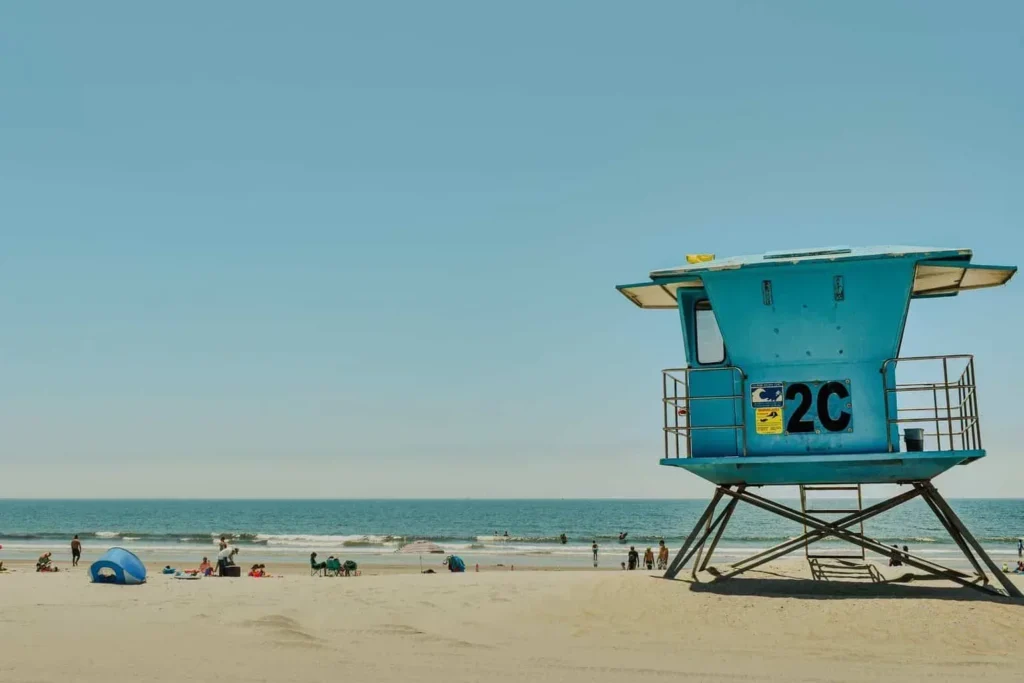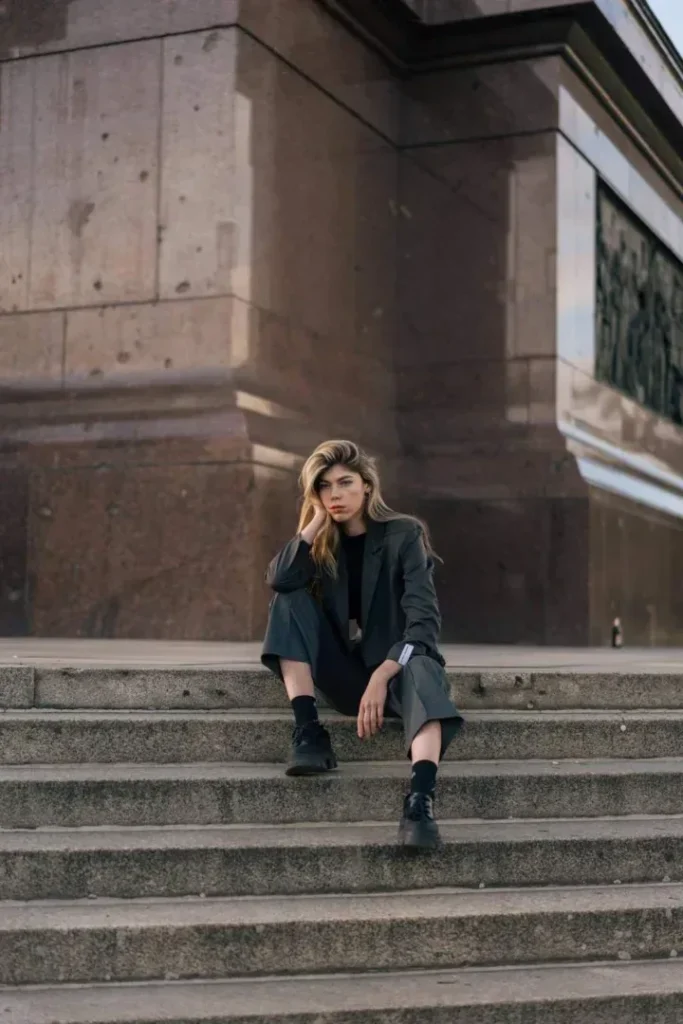So, you’ve probably heard the term “modern retro” thrown around here and there, but what does it actually mean? Well, in a nutshell, it’s all about blending the best of the past with a contemporary twist. It’s like taking a classic concept and giving it a funky, refreshed makeover. Picture vintage-inspired furniture with a sleek, modern edge, or a nostalgic 70s color palette combined with minimalist design elements. It’s all about celebrating the charm of the past while embracing the innovations of the present. Intrigued? Let’s dive into the world of modern retro and discover how this enchanting style is making a comeback in today’s design trends.
Understanding the Modern Retro Concept
Defining Modern Retro
Modern retro is a design concept that combines elements from the past with modern aesthetics to create a unique and visually appealing style. It embraces nostalgia and draws inspiration from various eras, such as the 1950s, 1960s, and 1970s, while integrating contemporary elements to give it a modern twist. The key idea behind modern retro is to create a fusion of old and new, blending vintage charm with contemporary sensibilities.
Origin and Evolution of Modern Retro
The concept of modern retro has its roots in the mid-20th century, when a wave of nostalgia for the past swept through popular culture. With the rise of postmodernism in the 1980s, there was a renewed interest in revisiting the aesthetics and styles of previous decades. This led designers and artists to experiment with combining retro elements with modern design principles.
Over time, modern retro evolved as a response to the fast-paced, technologically advanced world. It served as a way to reconnect with the past and embrace a sense of authenticity in an increasingly virtual and digitized society. Today, modern retro has become a prominent design trend that spans various industries, including fashion, interior design, graphic design, music, and technology.
Significance of Modern Retro in Today’s World
Presence in Popular Culture
The influence of modern retro can be seen in popular culture in numerous ways. From the resurgence of vintage-inspired fashion trends to the revival of classic music genres, the impact of modern retro is undeniable. Movies and television shows often incorporate retro elements in their production design and costumes, creating a nostalgic atmosphere for viewers. Even video games have embraced the modern retro concept, with pixel art and retro-inspired gameplay becoming popular among gamers.
Influence on Consumer Behaviour
Modern retro has a profound influence on consumer behavior, particularly among those seeking a sense of escapism and nostalgia. Many people are drawn to the familiarity and simplicity of designs from the past, as they provide a break from the overwhelming pace of modern life. The longing for a simpler time and the desire to recapture the essence of bygone eras fuel the popularity of modern retro products and experiences.
Impact on Modern Design
Modern retro has had a significant impact on modern design practices. Designers across various disciplines often incorporate retro elements into their work, whether it’s in typography, color choices, or overall aesthetic. By blending old and new, modern retro designs create visually striking compositions that spark intrigue and evoke emotions. This blending of styles allows for a fusion of old-fashioned charm and contemporary sensibilities, resulting in designs that appeal to a wide range of audiences.

This image is property of images.pexels.com.
Visual Cues of Modern Retro
Common Styles and Themes
In modern retro design, several common styles and themes emerge. Mid-century modern, for example, references the clean lines and organic shapes popularized in the 1950s and 1960s. This style often emphasizes simplicity, functionality, and a connection to nature. Another prevalent theme is the influence of the 1970s, characterized by bold geometric patterns, earthy color palettes, and a bohemian aesthetic. These styles and themes serve as foundations for modern retro design, providing a starting point for creative exploration.
Color Schemes
Color plays a crucial role in modern retro design, as it helps evoke the essence of different eras. Pastel hues, such as dusty pinks, mint greens, and baby blues, are often associated with 1950s aesthetics. On the other hand, bold and vibrant colors like orange, yellow, and avocado green are reminiscent of the 1970s. By carefully selecting and combining colors, designers can transport viewers to specific time periods and create a cohesive retro atmosphere.
Shapes and Patterns
In modern retro design, certain shapes and patterns are commonly used to convey a vintage feel. Mid-century modern designs often feature curved lines, gentle contours, and organic shapes inspired by nature. Geometric patterns, such as chevron, herringbone, and mod-inspired motifs, can evoke the bold and playful spirit of the 1960s. By incorporating these shapes and patterns, designers can infuse their work with a distinct retro vibe.
Modern Retro in Fashion
Clothing
Fashion is one of the most prominent areas where modern retro shines. Vintage-inspired clothing allows individuals to express their personal style while paying homage to previous decades. Retro silhouettes, such as A-line skirts, pencil dresses, and high-waisted trousers, are frequently seen in modern clothing collections. Fabrics like tweed, leather, and denim are often chosen to add an authentic touch. By mixing vintage-inspired pieces with modern accessories and styling, individuals can create unique and fashionable outfits that blend the old and the new.
Accessories and Jewelry
When it comes to accessories and jewelry, modern retro offers a wide range of choices. Cat-eye sunglasses, chunky statement necklaces, and oversized hoop earrings are just a few examples of retro-inspired accessories that have made a comeback. Vintage-inspired handbags and purses are also popular choices, featuring classic shapes and retro patterns. The use of natural materials like wood, resin, and rattan adds an authentic touch to jewelry pieces, creating a truly retro aesthetic.
Fashion Shows and Runway Trends
Fashion shows and runway trends often incorporate modern retro elements to captivate audiences. Designers take inspiration from various eras to create collections that pay homage to the past while remaining relevant in the present. Retro color palettes, patterns, and silhouettes take center stage, showcasing the enduring appeal of modern retro in the fashion industry. By combining nostalgic elements with contemporary twists, fashion designers create visually stunning collections that resonate with fashion enthusiasts.

This image is property of images.pexels.com.
Modern Retro in Interior Design
Furniture Styles
In the realm of interior design, modern retro influences can be observed in furniture styles. Mid-century modern furniture, characterized by clean lines, organic forms, and minimalist aesthetics, remains highly sought after. Iconic pieces like the Eames Lounge Chair, the Egg Chair, and the Tulip Table continue to be popular choices among design enthusiasts. Furniture from the 1970s is also prevalent, with its bold colors, plush textures, and unconventional designs adding a playful touch to modern interiors.
Decorative Elements
Modern retro decorative elements contribute to the overall aesthetic of a space. Wallpapers featuring geometric patterns or floral designs reminiscent of the past can instantly transport a room back in time. Vintage-inspired lighting fixtures, such as Sputnik chandeliers or cone-shaped pendant lamps, create a retro ambiance when paired with modern furnishings. The use of retro accessories like lava lamps, record players, and rotary telephones adds a nostalgic charm to interiors, making them feel warm and inviting.
Color and Pattern Use
Color and pattern play important roles in modern retro interior design. The choice of colors can set the mood and evoke specific time periods. Neutral tones like beige, brown, and cream are often used as a backdrop, allowing retro-inspired colors to pop. Patterns like floral prints, stripes, and polka dots add visual interest and capture the essence of different eras. By skillfully blending colors and patterns, interior designers can create harmonious spaces that embrace the modern retro aesthetic.
Modern Retro in Graphic Design
Typography
Typography is a powerful tool in modern retro graphic design. Fonts from past eras, such as Art Deco fonts from the 1920s or psychedelic fonts from the 1960s, can instantly transport viewers to a specific time period. Serif fonts with elegant curves evoke the sophistication of mid-century aesthetics, while bold and playful fonts reflect the spirit of the 1970s. By combining different typographic styles, graphic designers can create visually dynamic compositions that capture the essence of modern retro.
Use of Colors
Color is another essential element in modern retro graphic design. Designers often draw inspiration from retro color palettes, incorporating hues that were popular in past decades. Bright and bold colors like turquoise, mustard yellow, and coral can add an energetic and playful touch to designs. Pastel shades bring a softer, more nostalgic feel to compositions. By carefully selecting and arranging colors, graphic designers can create visually striking artwork that embodies the modern retro style.
Design Elements
Modern retro graphic design incorporates various design elements to evoke nostalgia and create a visually appealing composition. Retro-inspired patterns, such as checkerboards, wavy lines, and mod-inspired motifs, can add a distinct retro vibe. The use of vintage illustrations, retro photographs, and film grain textures adds an authentic touch and enhances the overall retro aesthetic. By combining these elements with modern design techniques, graphic designers can create captivating visuals that resonate with viewers.

This image is property of images.unsplash.com.
Modern Retro in Music and Entertainment
Music Genres
Modern retro has had a significant impact on music genres and has led to a resurgence of interest in past styles. Artists and bands draw inspiration from various decades, such as the smooth jazz sounds of the 1920s and the upbeat disco tunes of the 1970s. Genres like synthwave and vaporwave have emerged, blending retro elements with electronic music to create a nostalgic and futuristic sound. The popularity of these genres reflects the widespread appeal of modern retro in the music industry.
Film and TV
Film and television often incorporate modern retro elements to transport viewers to different eras. Period dramas set in the mid-20th century, for example, meticulously recreate the fashion, architecture, and overall aesthetic of the time. Movies like “La La Land” and “Baby Driver” pay homage to classic Hollywood films, showcasing the enduring influence of retro aesthetics on modern storytelling. TV shows like “Stranger Things” tap into the nostalgia for the 1980s, using retro-inspired visuals and soundtracks to captivate audiences.
Video Gaming
Modern retro has made its mark in the gaming industry as well. Many video games pay tribute to classic arcade games and console systems from the past. Pixel art, characterized by its blocky and simplistic style, is frequently used to recreate the visuals of retro games. Indie game developers often draw inspiration from the graphics and gameplay mechanics of past decades, creating experiences that appeal to both nostalgic gamers and younger audiences. The incorporation of modern technology with retro design elements showcases the timeless appeal of modern retro in the gaming world.
Modern Retro in Technology
Retro-inspired Gadgets
In the realm of technology, retro-inspired gadgets have gained popularity among consumers. Vinyl record players, rotary dial phones, and retro-style cameras are just a few examples of gadgets that blend old-school charm with modern functionality. These devices offer a nostalgic experience while incorporating modern features and technology. The appeal of retro-inspired gadgets lies in their ability to bridge the gap between the past and the present, providing users with a sense of nostalgia in a modern world.
Use in Application and Website Design
Modern retro elements are frequently incorporated into application and website design to create visually engaging interfaces. The use of retro color palettes, typography, and graphics can enhance the user experience by evoking certain emotions and associations. Intentional references to past technologies, such as skeuomorphic design elements inspired by old computer interfaces, can create a sense of familiarity and ease of use. By striking a balance between old and new, designers can create digital experiences that appeal to a wide range of users.
Digital Art
Digital art offers artists a platform to explore the modern retro concept. Through various digital techniques and software, artists can create artwork that captures the essence of different eras. By blending retro-inspired colors, patterns, and visual cues with modern digital tools, they can create unique compositions that channel nostalgia while embracing contemporary aesthetics. Through the medium of digital art, the appeal of modern retro can be expressed in new and innovative ways.

This image is property of images.unsplash.com.
The Appeal of Modern Retro
Conveying Nostalgia
One of the primary appeals of modern retro is its ability to convey nostalgia. It allows individuals to reminisce about the past, connecting them to cherished memories and experiences. The familiar elements and aesthetics of previous decades evoke a sense of comfort and sentimental longing. In an ever-changing and fast-paced world, modern retro provides a way to escape and find solace in the memories and aesthetics of yesteryears.
Sense of Uniqueness
Modern retro offers a sense of uniqueness and individuality in a world saturated with mass-produced and uniform designs. By incorporating retro-inspired elements into their lifestyles, individuals can express their personal style and stand out from the crowd. Whether it’s through fashion choices, interior design, or graphic design, modern retro empowers individuals to embrace their individuality and create spaces and visuals that reflect their taste and personality.
Connection to Past Decades
Modern retro allows individuals to connect with past decades and preserve the cultural heritage of those times. By appreciating the aesthetics and styles of previous eras, people can gain a deeper understanding of the social and cultural context in which they existed. Modern retro acts as a bridge between generations, allowing younger individuals to explore and engage with the cultural heritage of their parents and grandparents. Through the modern retro concept, the cultural legacy of past decades is celebrated and kept alive.
Criticism and Challenges of Modern Retro
Over Saturation of Retro Styles
One criticism of modern retro is the potential for over saturation of retro styles in various industries. As the concept gains popularity, there is a risk of designs becoming repetitive and unoriginal. It is important for designers to stay inventive and find new ways to reinterpret retro aesthetics in order to avoid the staleness that can come from relying too heavily on established tropes.
Potential for Cultural Misinterpretation
Another challenge of modern retro is the potential for cultural misinterpretation. When borrowing elements from specific time periods or cultures, it is important to do so respectfully and with proper understanding. Misappropriation or misrepresentation of cultural symbols can be offensive and disrespectful. Designers must tread carefully to ensure that modern retro designs are inclusive and honor the heritage they draw inspiration from.
Balance Between Old and New
Striking a balance between the old and the new is a significant challenge in modern retro design. While it is essential to incorporate retro elements, it is equally important to embrace modern aesthetics and functionality. Designs that rely too heavily on the past without considering contemporary sensibilities may feel outdated and fail to resonate with today’s audiences. Finding the perfect balance between old and new is crucial in creating modern retro designs that are visually appealing and relevant in the modern world.
In conclusion, modern retro is a design concept that combines elements from the past with contemporary sensibilities, creating visually striking compositions that evoke nostalgia and captivate audiences. Its significance can be seen in popular culture, consumer behavior, and various design disciplines. Modern retro manifests itself in visual cues such as common styles, color schemes, and patterns, and it can be observed in fashion, interior design, graphic design, music, and technology. The appeal of modern retro lies in its ability to convey nostalgia, provide a sense of uniqueness, and connect people to the cultural heritage of past decades. However, there are challenges to address, such as the potential for over saturation, cultural misinterpretation, and the need to strike a balance between old and new. Despite these challenges, modern retro continues to charm and inspire individuals around the world, offering a bridge between the past and the present in an ever-evolving society.

This image is property of images.pexels.com.

